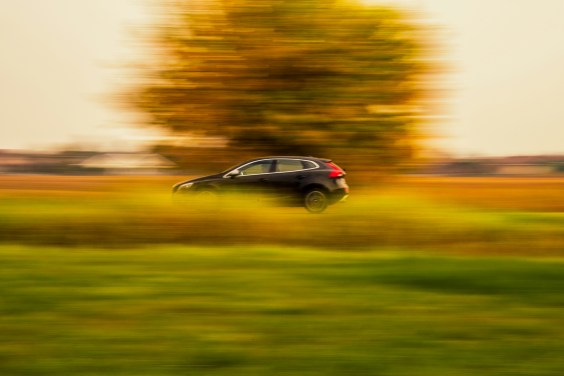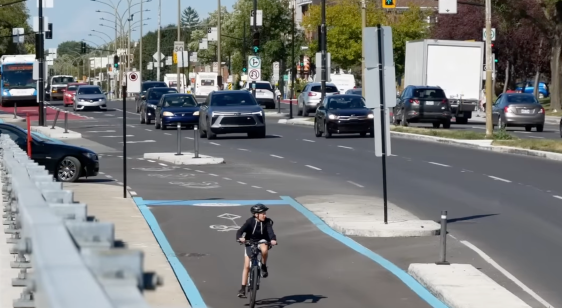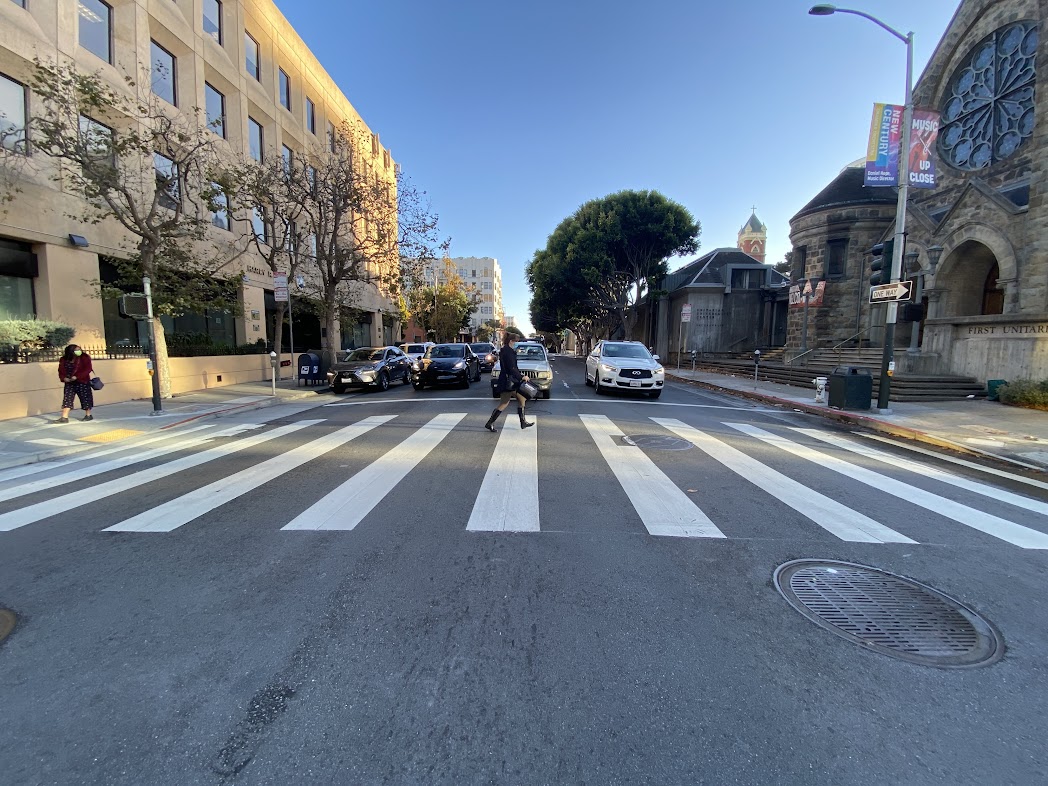
Electric Vehicles (EVs) are all the rage these days and the press seems to treat them as a palliative for all that ails our fossil-fuel-driven, automobile-dependent transportation network. The New York Times has fallen in love with Better Place, an electric-car battery maker that seeks to replace much of the U.S. fleet of vehicles with ones that run on electric batteries, which could be changed at battery stations much the way we currently fill up at gas stations.
Then Mayor Gavin Newsom yesterday announced San Franciso's new agreement with City CarShare and Zipcar to include two electric plug-in vehicles in their fleets (one each), proclaiming that "Electric vehicles are the future of transportation and the Bay Area is the testing ground for the technology."
Unfortunately, that's a future I don't find attractive, and one that should concern livable streets urbanists. It hearkens to the "something for nothing" culture bemoaned so eloquently by James Howard Kunstler and implies that Americans don't have to give up any of the convenience of cars to become energy independent.
As Kunstler put it:
We became a nation of overfed clowns who believed that it was possibleto get something for nothing, who ravaged the landscape in an orgy ofwanton carelessness, who believed they were entitled to lives ofeverlasting comfort and convenience, no matter what, and expected therest of the world to pay for it. We even elected a vice-president whodeclared that this American way of life was non-negotiable.
Wenow face the most serious challenge to our collective identity,economy, culture, and security since the Civil War. The end of thecheap fossil fuel era will change everything about how we live in thiscountry. It will challenge all of our assumptions. It will compel us todo things differently - whether we like it or not.
That is, unless we can just find a clean source of fuel, the electric-car folks might contend.
And to their credit, electric cars do not emit as much as petroleum vehicles, at least at
the tailpipe, and emissions reductions in the Bay Area and statewide will go a very long way to combating the largest source of CO2 (nearly 50 percent of the total) in the state. But electricity generation is very dirty in most parts of the country, so
scaling up to hundreds of millions of electric vehicles will put a huge
burden on the traditional coal-based grid.
When asked about the sources of electricity, Better Place spokesperson Julie Mullins said the company will pay a premium for renewable energy wherever they add vehicles to the fleet. She said that in Hawaii and New York, where much of the electricity grid is fueled by diesel and coal, they will buy the equivalent amount of renewable energy.
"We want to reduce the emissions from the cars because we know that people aren't going to give up the cars," she said, though she admitted that they are not looking at the issue the same way as urbanists. And she acknowledged that battery production contains the same dependency traps as petroleum. "We're trying to clean up our dependence on oil, but we don't want to trade one
reliance for another. Batteries will become a virtual oilfield, so we have to ask how do we make it so the US
builds an industry domestically."
How this will happen remains to be seen, particularly because the U.S. has no prominent reserves of lithium.
Electric Vehicles Don't Cut VMT and Still Hurt When They Hit You
This electric-vehicles-cure-all mindset also ignores substantial transportation, land use, and energy policies that have little to do with innovation in batteries or biofuels. Changing the fuel source for cars won't cure the host of other ills generated by automobile dependence, such as increased vehicle miles traveled (VMT), traffic, and congestion, sprawl and land-use policies that further cement automobile dependence, the danger that cars pose to pedestrians and cyclists, the delay to transit, the huge public
and private costs of parking, the embodied energy costs of vehicle production (and battery production, should that scale up), escalating road maintenance expenses, and
the displacement of green and public open space by parking and
traffic.
UC Davis transportation scientist Mark Delucchi, who wrote a defense of technology-fixing-transportation problems titled, "How
We Can Have Safe, Convenient, Clean, Affordable, Pleasant
Transportation Without Making People Drive Less or Give Up Suburban
Living," admitted we have to face up to the costs of large cars:
I am concerned that once we find a way to greatly reduce GHGemissions from the passenger-transport sector, we will think we havesolved our biggest transport problems and move on. Thus, I have noaffinity for the Governator's promotion of hydrogen fuel cell vehicles,because I think it is just a way to put green lipstick on a piggieHummer. A zero-GHG Hummer is still an abomination that slaughters othertravelers, takes up way too much road space, requires way too muchsupport infrastructure, consumes too many resources in manufacture, andblights our world. I am absolutely appalled by the lack of seriousnesswith which we address these other impacts of transportation.

VMT growth has far outpaced population growth in the
past few decades, in large part because we live further and further
from where we work. And while polls and recent New York Times
columnists might consider this to be normal or even desirable, it is
not sustainable.
Ironically, what is sustainable is New York City itself. As a new
report by the NYC Department of Transportation found, New York City has
added substantially to its population and traffic did not increase. Instead, people rode transit, rode bicycles, or found what they needed within a short walk of
their home.

As Tom Vanderbilt wrote recently on his blog How We Drive, the solution isn't just to create cleaner cars, but to live in urban areas where so many car trips aren't necessary.
If San Francisco wants to be on the cutting edge in the fight against carbon, suggests Livable Citiy's Tom Radulovich, it should spend money on fixing public transit:
The Mayor's enthusiasm for electric cars is well known. If he is trulyinterested in making the city sustainable and livable, he needs to takeaction to increase funding for transit, and improve the speed,reliability, and comfort of Muni. Muni faces huge budget cuts thisyear, and the Mayor's revenue panel, after two years, hasn't recommendanything but fare increases. Higher transit fares and Muni service cutswill likely negate any environmental benefit that electric cars mightbring, and will unduly burden the San Franciscans who are sufferingworst in this economy, including seniors, youth, the disabled, and thepoor. Muni's on-time performance has been stuck at about 70% for theMayor's entire tenure, well below the City Charter's 85% goal.
Do We Even Want a City Full of Cars?
An even more significant question, though less tangible or easily quantified, is what kind of city will we have if we continue to promote insular personal mobility and comfort devices at the expense of spatially efficient, healthy, and more humane modes of transport, like bicycles and our own two feet.
We could, as Professor Delucchi notes, through " a combination of massive
conservation, rapid technological development, and willingness to
tolerate somewhat higher electricity prices (in exchange for
essentially zero external costs of all kinds) [get] close to
100 percent clean renewable electricity worldwide," and obviate the need to analyze
electricity supply-related problems.
But will we still submit to a topography of public space dominated by the movement and storage of cars? Leah Shahum of the SFBC noted with some angst that Mayor Newsom had painted several parking spaces green for the press conference to launch the electric vehicle car-share, but that the city still can't stripe bike lanes, a decidedly green mode choice.
"With the Bike Plan
injunction due to be lifted this spring, we hope to see the Mayor
commit funding and street space to good, old-fashioned bicycling, not
just the more technologically - but less green - electric
vehicles," she said.
Blaine Merker of the artist collective Rebar, which gave us Parking Day and Bushwaffle, hopes we can alter our definition of green cities even further:
Let's expand our definition of "green" to include our culture and ourrelationships with each other. Now is San Francisco's chance to capturethe country's imagination not just by reducing our dependence on oil,but by reducing our dependence on expensive, bulky, socially-isolatingboxes for everyday trips. When we take our streets back for living,playing and relaxing, then we'll really be national leaders.
The less power we use, the more we learn to rely on social capitalto get things done. Electric cars still use an order of magnitude morepower than human-powered and collective transit, and their impact onurban form unfortunately repeats the socially isolating effects of oil.





